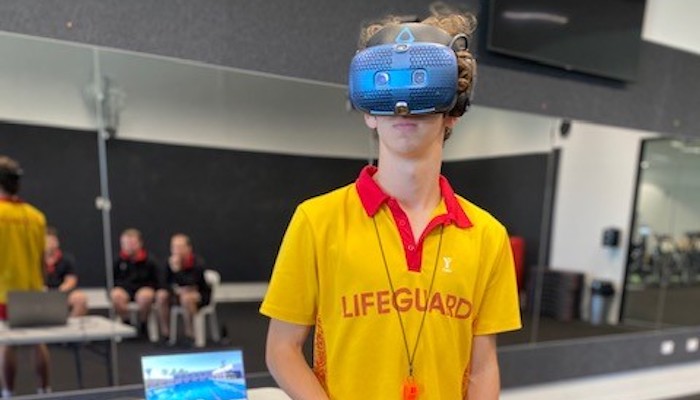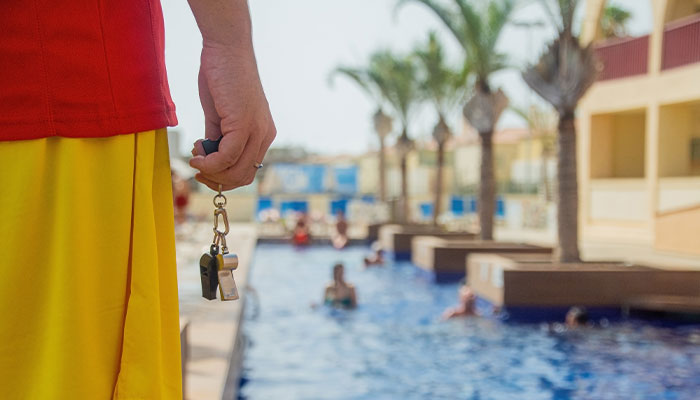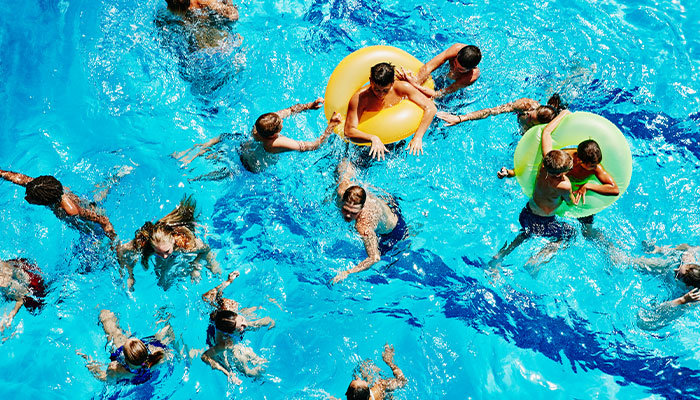
“Lifeguards wearing a virtual reality headset can move through various training scenarios and recognise potential drowning situations or behaviour that’s inappropriate,” says Professor Mark Wiggins, the Macquarie University organisational psychologist who is leading the project.
“Instructors can give lifeguards immediate feedback because they can see precisely how each individual interacts with their environment."
Virtual reality technology lets us train lifeguards as individuals, not just in a collective, and also address the psychological factors of lifeguarding.
Royal Life Saving Australia reports that 11 per cent of Australia’s drowning-related deaths between 2019 and 2020 occurred in aquatic pools.
Virtual reality check
Lifeguards play a critical role in pool safety. Pool lifeguards must qualify in first aid before completing a professional qualification that includes aquatic supervision, risk management and rescue techniques, with proficiency training updated each year.
The job involves watching over large pools that cater for swimmers of all ages and abilities including young children, vulnerable swimmers and non-swimmers.
It can be hard to spot someone in trouble in this environment because both ‘active’ and ‘passive’ drowning look a lot like other normal pool behaviours.
In active drowning, swimmers try to resist going underwater, perhaps tossing their head backwards and flailing their arms around, while a person who is passively drowning can lie motionless on the water’s surface or slip face down towards the bottom of the pool.
While lifeguards are taught to catch the subtle signs of drowning behaviour using techniques like visual scanning, better drowning detection is linked to experience – and VR provides a low-risk, high-impact simulated work environment, says Professor Wiggins.
“We’re piloting the VR training across the 100 or so lifeguards working in our ACT sites,” says Melanie Rahtz who, as the Y NSW Quality and Compliance manager, is a key part of the project.

Rahtz says that while lifeguards are trained, and tested annually, on core competencies such as first aid and other generic skills, it is difficult to assess operational scenarios.
“When a lifeguard is using these skills at a facility, there’s a host of other distractions, so this project and the research behind it have addressed the psychological factors of lifeguarding, which go beyond just physically being present," says Raahtz.
Lifeguard training in the limelight
Lifeguards update their qualification annually, mostly in team training sessions where there’s a run-through of competencies like resuscitation, spinal injury management and first aid.
“We follow industry best-practice training for lifeguards at the moment, where we hold face-to-face training sessions with the team, but we don’t capture performance data on individuals and we don’t have a way to measure continuous improvement,” says Rahtz.
Many of the Y NSW pools open at 5am and don’t close till 10pm, so there’s little opportunity to run an assessment when the pool is closed, she says.
“Virtual reality technology lets us train lifeguards as individuals, not just in a collective, and also address the psychological factors of lifeguarding,” says Rahtz.

Rahtz says other lifeguard training methods include videos of drowning, simulations where people act out drowning and simulations using mannequins.
“These can sometimes be risky, and they also don’t replicate the complex and dynamic visual environment, with multiple distractions, in which lifeguards operate,” she says.
Tests of the VR modules demonstrate that experienced lifeguards show far greater ability in being able to detect drowning victims. “This is a game-changer for lifeguard training."
Mark Wiggins is Professor of Organisational Psychology, School of Psychological Sciences, Macquarie University. He is also a Fellow of the Australian Psychological Society, and a Registered Psychologist in Australia.



